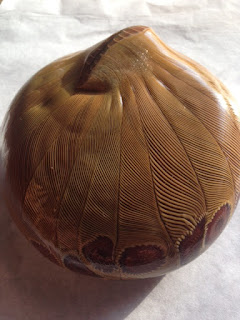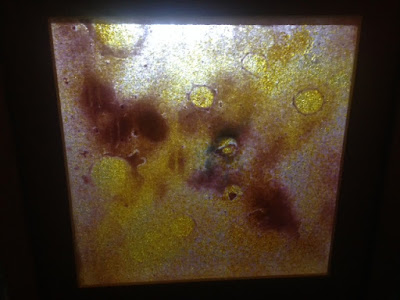After much procrastination I finally went to visit the Canberra Glassworks and Old Bus Depot markets in Kingston, ACT. A big day out as it took me an hour to get out of central Canberra - no signs to anywhere but ACT suburbs and so did the loop a few times.
Canberra Glassworks is well worth the visit. The 'Engine Room', hotshop and artist's benches are 'open' to the public and seeing artists at work is always good. Here it is so much better than Murano in Venice. Highlights were talking with Matthew Curtis and saying 'hello' to Klaus Moje!!
The current exhibition is 'The Distant Warriors "Ka maumahara" (we will remember). Let us not be forgotten.' featuring glass and textiles inspired by the stories of indigenous and Maori soldiers. The artists are all indigenous or Maori and the glass poles or columns shown above were the best pieces.
The second from left column is by Jennie Kemarre Martinello who is a very talented and successful textile/print/glass artist. Her main works are dill bags or fish traps made from glass murrini. Very delicate and quite beautiful. I bought a paperweight that she makes from left over murrini.
Bottom
Top
I also bought a medium sized plate by Kate Baker (a favourite of mine) that has a screen printed image on clear. She uses a lot of images and text and almost always screen prints on to the glass.
She does teach at her studio in Surry Hills (?) but her courses are expensive for what is after all a $60 plate. If she ever teaches printmaking techniques though I would willingly spend the money.
Detail
Oh and the Bus Depot Markets....okay but nothing special or different. It was quite busy though so may be worth applying to have a stall one Sunday a month. Watch this space!

















